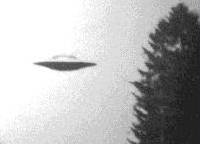Article/Document:
Project Magnet
From the Encyclopedia of UFOs, edited by Ronald Story
original source | fair use notice
Summary: This project was a study of UFOs carried out by the Department of Transport (DOT) in Canada in the early 1950s. It was set up in December 1950 under the direction of Wilbert B. Smith, then a senior radio engineer, Broadcast and Measurements Section.
This project was a study of UFOs carried out by the Department of Transport (DOT) in Canada in the early 1950s. It was set up in December 1950 under the direction of Wilbert B. Smith, then a senior radio engineer, Broadcast and Measurements Section.
The project was quite small; it used facilities of DOT, with assistance from other government departments, including the Defense Research Board (DRB) and the National Research Council (NRC). The project was an outgrowth of work already being done by Smith and a group of colleagues within DOT on the collapse of the Earth’s magnetic field as a source of energy. It was the belief of many that "FLYING SAUCERS" were operating on magnetic principles and it was thought the DOT work might explain their operation.
The program consisted of two parts; (1) collection of high-quality data, analysis, and drawing conclusions; and (2) a systematic questioning of all our basic concepts in hope of identifying a discrepancy which might be the key to a new technology. Smith also developed ideas for measuring the reliability of observational data, and using these measurements to rate the probability that a given report could be accepted as a real observation.
In 1952, Smith submitted an interim report, in which he stated that it appeared evident that flying saucers are emissaries from some other civilization and actually do operate on magnetic principles.
In 1953, he submitted a further report in which he concluded that we are faced with a substantial probability of the real existence of extraterrestrial vehicles and that such vehicles must of necessity use a technology considerably in advance of what we have.
Smith established the world’s first "flying saucer sighting station" at Shirley bay, outside Ottawa, in November 1953. This station consisted of a small wooden DRB building, containing some highly sophisticated instrumentation specially adapted to detect flying saucers. These instruments were: gamma-ray counter, a magnetometer, a radio receiver, and a recording gravimeter. These four instruments produced traces on a multiple-pen graphical recorder which was checked periodically to note any disturbances.
At 3:01 PM., August 8, 1954, the station registered a definite disturbance, quite different from disturbances registered by passing aircraft. Smith and his colleagues were alerted by a built-in alarm system. Regrettably, heavy fog prevailed and it was impossible to see anything overhead. The recorded evidence, however, indicated that something strange had flown within feet of the station.
On August 10, 1954, DOT officially folded Project Magnet, but permitted Smith to continue using its facilities on his own time at no expense to the government. Smith continued his work privately until his death in December 1962.
Arthur Bray
Read more articles on this topic:






